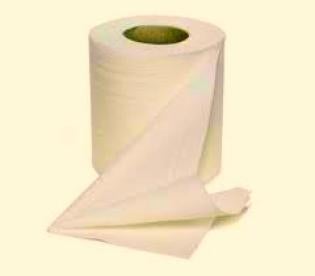The U.S. Court of Appeals for the Seventh Circuit, on a de novo review of a district court grant of summary judgment in favor of defendant in an unfair competition and trademark infringement suit involving patterned toilet paper, disposed of plaintiff’s claim using ironic and candid prose to explain its conclusions. Georgia-Pacific v. Kimberly-Clark, Case No. 10-3519 (7th Cir., July 28, 2011) (Evans, J.).
Georgia-Pacific sued Kimberly-Clark over the design similarity between Quilted Northern and Cottonelle toilet paper. Both brands bear diamond-shaped designs on the surface of the paper, and Georgia-Pacific asserted that the Cottonelle brand infringed its allegedly “incontestable” trademarks. Kimberly-Clark defended on the basis that the functionality of the design trumped any goodwill plaintiff may have made in promoting its mark to consumers. After Kimberly-Clark prevailed on its functionality defense, Georgia-Pacific appealed. In affirming the district court decision, the 7th Circuit agreed that the functionality of the quilted diamond designed used on Quilted Northern toilet paper precluded Georgia-Pacific from relying on the Lanham Act to protect its mark, in large part because the plaintiff already had already opted to protect the quilted design through utility patents. The court was quick to point out that even where a mark has incontestable status under 15 U.S.C. § 1065, it does not make the mark “invincible.”
In finding the pattern design embossed on the toilet paper was functional, the court focused its inquiry on post-TrafFix factors, assessing whether the design was “essential to the use or purpose of the article or it affects the cost or quality of the article.” The relevant factors the court considered were the following: the existence of a utility patent, the utilitarian properties of any unpatented design elements, advertising that touted utilitarian advantages of the design elements, the feasibility of alternative designs to achieve the same purpose and the effect of the design feature on quality or cost.
In weighing the factors, the court’s ultimate decision was heavily influenced by the fact that Georgia-Pacific already held utility patents disclosing the same lattice pattern it claimed as its trademark. After noting that while the embossed design on the accused product was indeed similar to the trademarked design, the court found the presence of the utility patents undercut Georgia-Pacific’s right to trademark protection as it was not entitled to claims both patent protection and trademark protection on useful designs. The 7th Circuit cited Federal Circuit precedent explaining that utility patents (whether extant or expired) are strong evidence that the claimed features are functional. Here, since the “central advance” in the Georgia-Pacific utility patents claimed the same “essential feature” as was found in the Georgia-Pacific trademarks, the 7th Circuit concluded that the trademarks were invalid because it is patent law that “protects useful designs from mimicry.” The court explained that having opted for patent protection, the plaintiff must “live with [its] choice” and was precluded from blocking innovation through trademarks



 i
i


